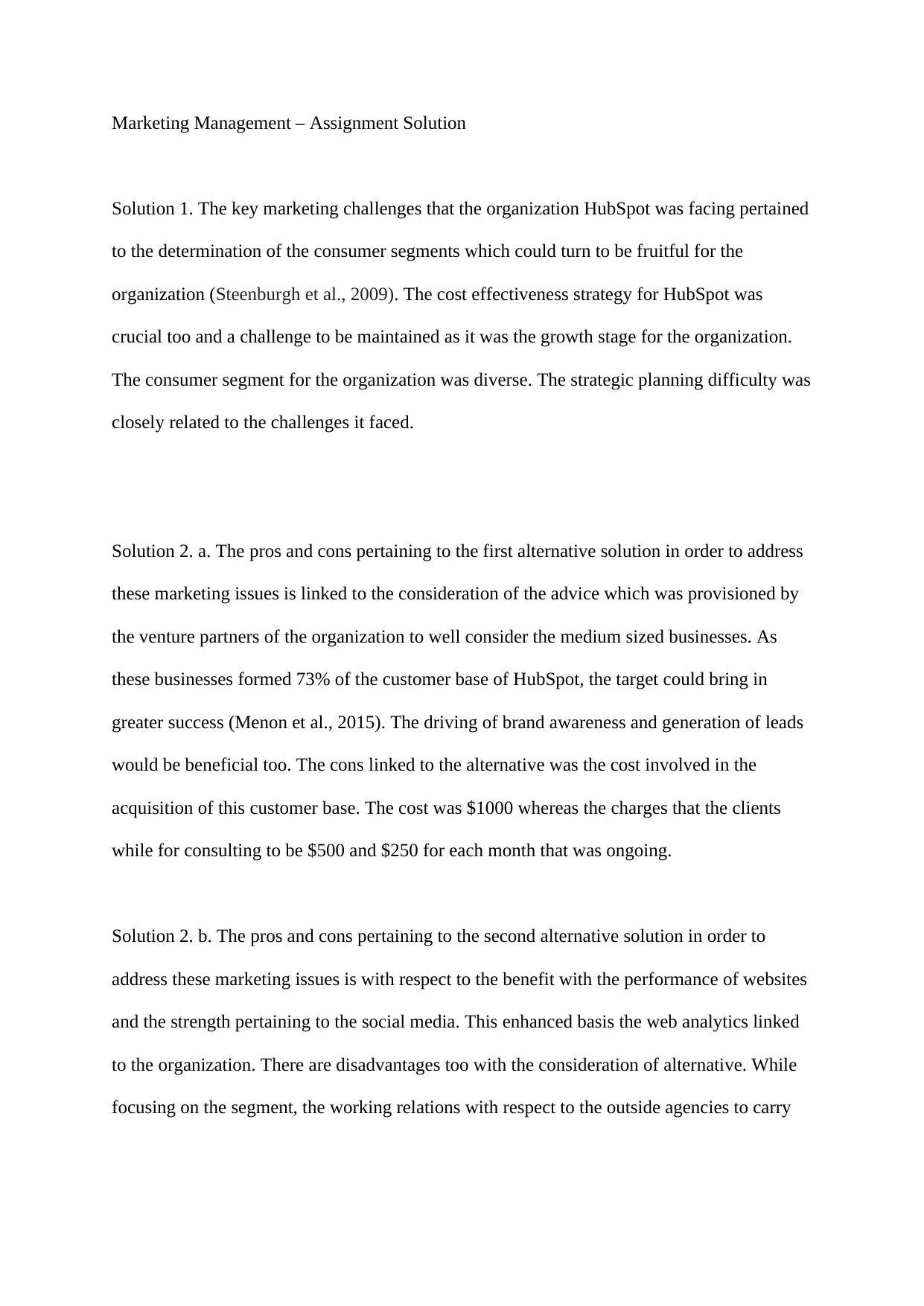Marketing Strategy Analysis: HubSpot Case Study and Recommendations
VerifiedAdded on 2019/09/23
|3
|672
|414
Case Study
AI Summary
This assignment provides a comprehensive case study analysis of HubSpot's marketing strategies, focusing on key challenges and potential solutions. The analysis begins with identifying the core marketing issues faced by HubSpot, including customer segmentation and cost-effectiveness. The solution explores two alternative approaches, assessing their pros and cons concerning target customer segments, lead generation, and website performance. Quantitative and qualitative solutions are presented, including the use of customer lifetime value calculations and content template creation. The implementation plan is based on the SMART framework, with a focus on lead generation, credibility building, and pricing strategy testing during the first year. Subsequent phases involve developing training materials, enhancing lead scoring, and upselling to existing customers. The case study references relevant academic sources to support its analysis and recommendations.
1 out of 3








![[object Object]](/_next/static/media/star-bottom.7253800d.svg)